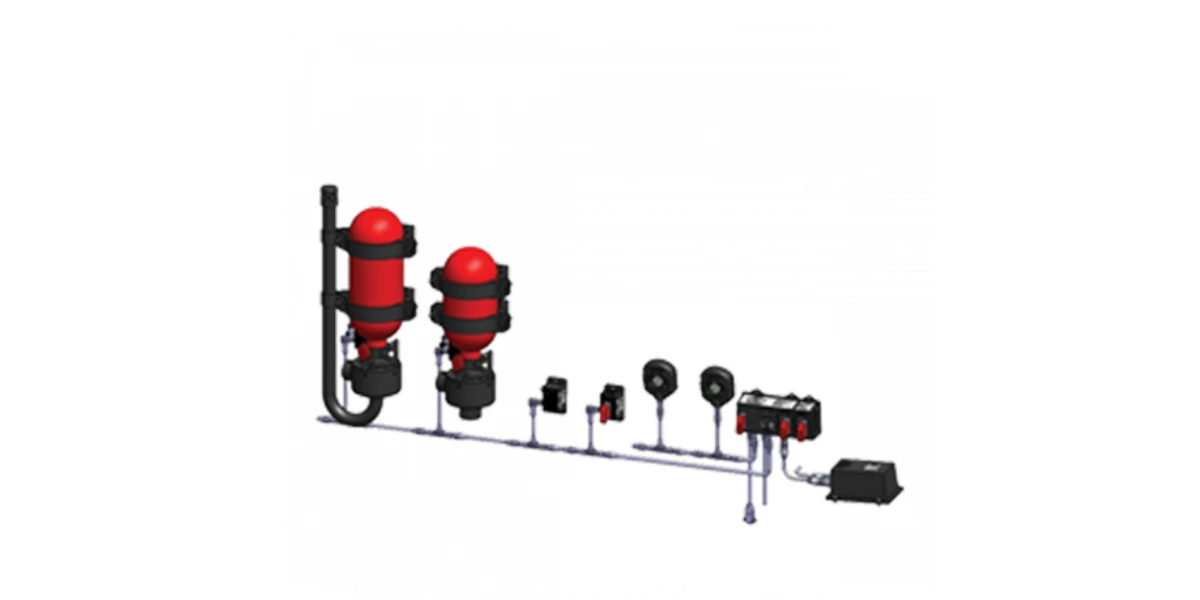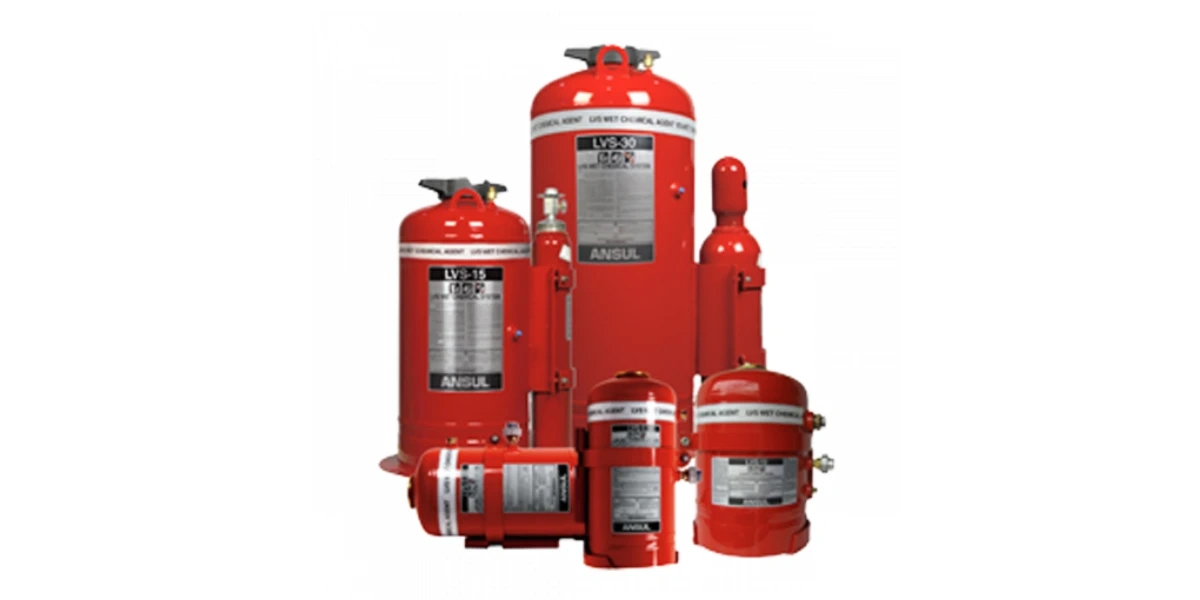Fire Suppression System: Car Guide | State College, PA

Let's talk about something really important for your car—fire suppression systems.
A pretty popular search term on Google right now is 'fire suppression system car,' which means a lot of people are concerned about protecting their vehicles from the threat of fire and are seeking solutions to keep them safe.
If you're among those who don't have a fire suppression system yet and are curious to know more, you're on the right track. Fire suppression systems are a necessary investment in your vehicle's safety because they act as a first line of defense against potential fires. Having one installed can make a significant difference in emergencies.
Let's take a look at what these systems are, how they work, and why they are becoming a must-have safety feature for car owners.
Key Takeaways
- Car fire suppression systems significantly improve vehicle safety by quickly detecting and extinguishing fires.
- Different types of fire suppression systems (like dry foam, liquid, and clean agents) cater to varied vehicle needs and fire types.
- These systems can be customized for different vehicles, and regular maintenance is crucial for ensuring their effectiveness.
What Are Car Fire Suppression Systems?

Car fire suppression systems are tools that can significantly enhance the safety of your vehicle. These systems are ingeniously designed to detect and extinguish fires, safeguarding not only your car but also its occupants.
A fire suppression system works in two stages. The first is detection and activation. The core of a car fire suppression system is its ability to detect a fire. Equipped with sensors, these systems can identify a fire outbreak quickly.
Once a fire is detected, the second stage kicks in. The system activates almost instantaneously. Upon activation, the system releases a suppression agent to extinguish the fire. The choice of agent—which can be a dry chemical, foam, or other specialized substances—depends on the system's design and the type of fires it's built to combat.
The agent works by either cooling the fire, depriving it of oxygen, or interrupting the chemical reaction that causes the fire.
System components
A typical car fire suppression system includes several components, such as a storage cylinder for the suppression agent, aluminum tubing to transport the agent, and nozzles for effective discharge. The system might be manual, allowing the driver or a passenger to activate it, or automatic, functioning independently when a fire is detected.
These systems can be customized to fit various types of vehicles, from everyday cars to specialized racing vehicles. The installation takes into account factors like the vehicle's size, the risk of fire in different areas of the car, and the ideal locations for sensors and nozzles.
Different Types of Car Fire Suppression Systems

When it comes to fire suppression systems in cars, there's more than one way to tackle those flames. Each system has its unique method, and choosing the right one depends on your vehicle and the types of fires you might encounter.
Let's break down the different types:
Dry systems
These are the go-getters in fire suppression. Loaded with dry chemical agents, usually a type of powder, they're designed to quickly extinguish a fire by smothering it and interrupting the chemical reaction that fuels the flames.
They're especially effective against a range of fire types and are a common choice in various vehicles.
Liquid systems
Liquid systems use a cooling method to fight fires. They are effective against both debris and fuel-based fires, making them versatile for various vehicle types. These systems prevent fire reignition by cooling surfaces and creating a foam barrier between the fuel and the fire, effectively putting it out.
Dual agent systems
Dual agent systems combine dry chemical and liquid agents into one system, providing a comprehensive fire suppression solution. These systems are ideal for modern, high-power vehicles where increased heat can lead to more severe fires.
The dual approach quickly suppresses the fire while also preventing it from reigniting.
Clean agent systems
If you're worried about damage to sensitive equipment in your car, a clean agent system might be your best bet. These systems use gas-like agents that leave no residue and are safe for electronics.
They work by reducing the fire's oxygen level or by cooling it down, making them a safe choice for high-tech vehicles.
Customized systems for race cars
For those of you who are into racing, there are specialized systems designed to handle the high-risk environment of a racetrack. These car racing fire systems often combine different agents and are tailored to the specific needs of a racing car, considering factors like speed, heat, and the type of fuel used.
Picking the Right Fire Suppression System for Your Car
Choosing the right fire suppression system for your car is crucial for ensuring optimal protection and safety. Here are some key steps and considerations to guide you in making the best choice:
Assess your vehicle's needs
Start by evaluating the specific fire risks associated with your car. Different vehicles have different risk profiles. For instance, racing cars might face higher risks of fuel fires, while electric vehicles might need protection against electrical fires.
Understand the types of fires
Familiarize yourself with the types of fires that can occur in a vehicle, such as electrical fires or flammable liquid fires. This knowledge will help you choose a system that is effective against the most likely fire scenarios for your car.
Based on the types of fires you need to protect against, select a fire safety equipment system with the appropriate suppression agent. For example, dry chemical agents are effective for a broad range of fires, while clean agents might be better for cars with sensitive electronic equipment.
Consider the fire system activation method
Decide between manual or automatic fire suppression systems. Automatic systems offer immediate response without driver intervention, which can be crucial in a fast-developing situation, whereas manual systems give the driver control over when to activate the suppression.
Check for compatibility, ease of installation, and maintenance requirements
Ensure the system is compatible with your vehicle type and can be installed without compromising other critical vehicle functions. Consider systems that are easy to install and maintain.
Don't forget about the maintenance requirements, too. Regular maintenance is vital in ensuring the system's reliability. This includes checking components like cables, nozzles, and the agent cylinder to ensure that everything is in working order and ready to function in case of a fire.
Look for quality and certification
Opt for systems that meet industry standards and certifications, such as the NFPA codes. Quality systems are more likely to be reliable and effective when you need them most.
If in doubt, consult with a fire safety expert or a reputable distributor who can provide insights into the best system for your vehicle based on its specific needs and usage. Check if they are members of credible fire distributor associations, such as the NAFED.
Secure Your Journey
You're now equipped with knowledge about various types of vehicle fire suppression systems and how to choose the right one for your heavy-duty equipment. But where do you go from here? Look no further than Swartz Fire & Safety for your vehicle fire suppression system needs. With 40 years of expertise in fire safety, we specialize in installing vehicle fire suppression systems for heavy-duty equipment such as loaders and mining equipment.
We understand the unique fire risks associated with these machines and provide tailored systems to meet these challenges. Ensure the safety of your heavy-duty equipment with a trusted name in fire safety. Protect your machinery and your workforce with a top-tier fire suppression system from Swartz Fire & Safety Inc.
Contact us today for a no-obligation consultation.
Frequently Asked Questions
What is a fire suppression system in a car?
A fire suppression system in a car is a safety setup designed to detect and extinguish fires within the vehicle. It typically includes sensors, a suppression agent, and a delivery mechanism to control and put out fires quickly.
What is the purpose of a fire suppression system?
The primary purpose of a fire suppression system is to protect the vehicle and its occupants from fire hazards. It acts swiftly to extinguish fires, minimizing damage to the car and ensuring the safety of those inside.
What is the engine fire extinguishing system?
An engine fire extinguishing system is a specific type of fire suppression system designed to detect and put out fires in a vehicle's engine compartment. It uses suppression agents to quickly control fires that may start in the engine area.
What is the most common fire suppression system?
In vehicles, dry chemical systems are widely used due to their effectiveness in various types of fires.


